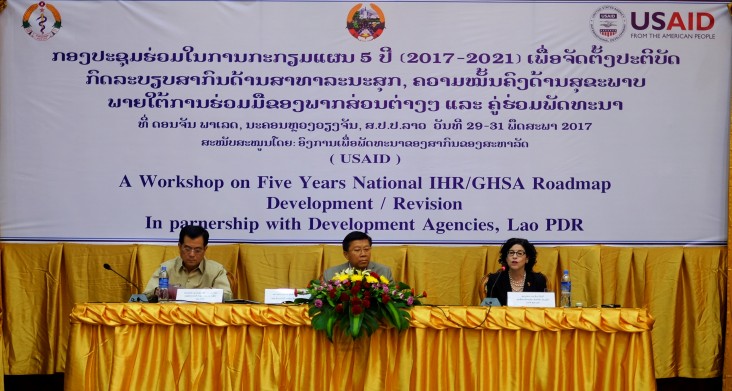
For Immediate Release
VIENTIANE, Lao PDR – Experts from the United States and Lao PDR met in Vientiane on May 31 to create action plans to strengthen resilience against health threats such as infectious diseases and emerging diseases that can pass from animals to humans.
The U.S. government, through the U.S. Agency for International Development, the Lao Ministry of Health Department of Communicable Disease Control, the Ministry of Agriculture and Forestry Department of Livestock and Fisheries brought together 100 government representatives to draft joint action plans. The purpose of these action plans is to accelerate the Lao PDR’s health security by actively engaging development partners.
“Today we join you in your commitment to secure a safer, healthier, more prosperous Laos PDR,” said U.S. Ambassador Rena Bitter. “We look forward to working with Laos to strengthen coordination with the international community to better prepare and respond to all health threats, both in Laos and around the world.”
In addition to the U.S. and the Lao PDR government participants, representatives from the World Health Organization (WHO), United Nations Food and Agriculture Organization, and bilateral international development agencies (Europe, Japan, and Korea) attended the meeting.
One of the outcomes of the meeting was a revised national Five-Year International Health Regulations Global Health Security Agenda (IHR/GHSA) Roadmap. Initially drafted in December 2016, the revised Roadmap reflects findings from a recent WHO Joint External Evaluation of Laos’ progress and capacity to advance objectives under the IHR/GHSA framework. The Roadmap sets key targets for 2021, including countering antimicrobial resistance, strengthening surveillance, establishing emergency operations centers, expanding a skilled global health security workforce, and building a whole-of-government approach to biosafety and biosecurity. The Roadmap serves as the basis for the results identified in the action plans to be implemented over the next five years.







Comment
Make a general inquiry or suggest an improvement.